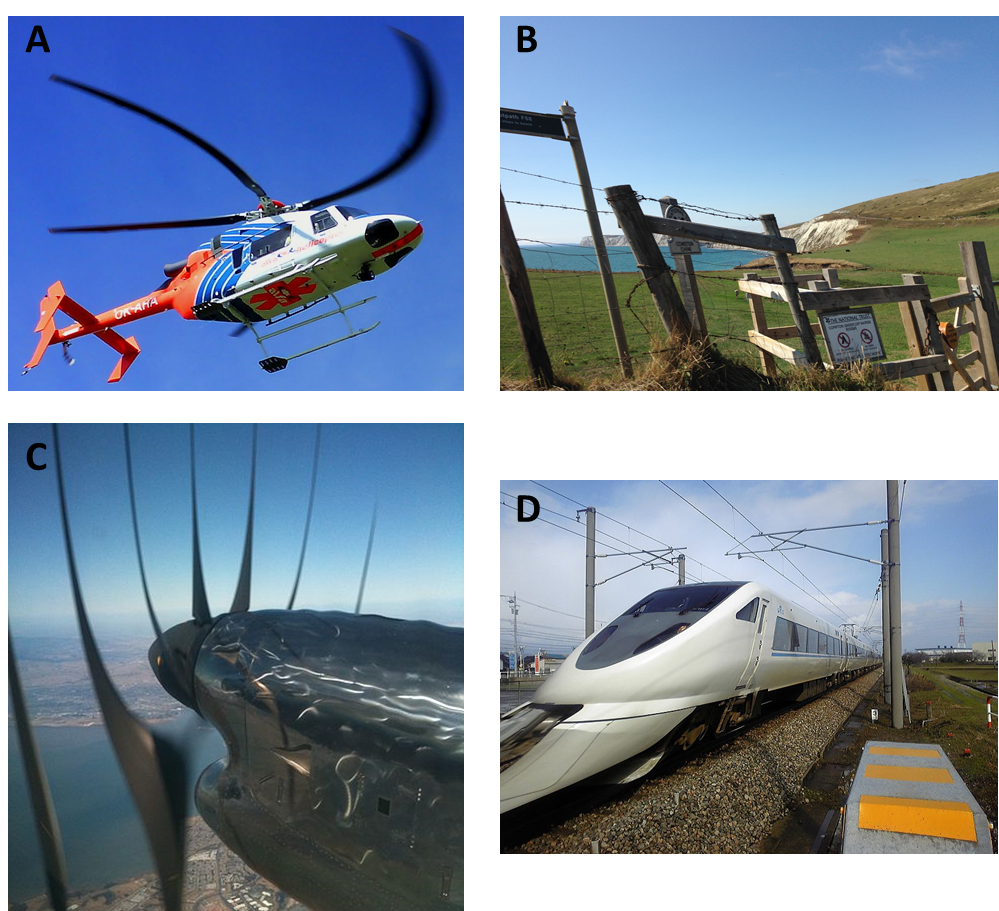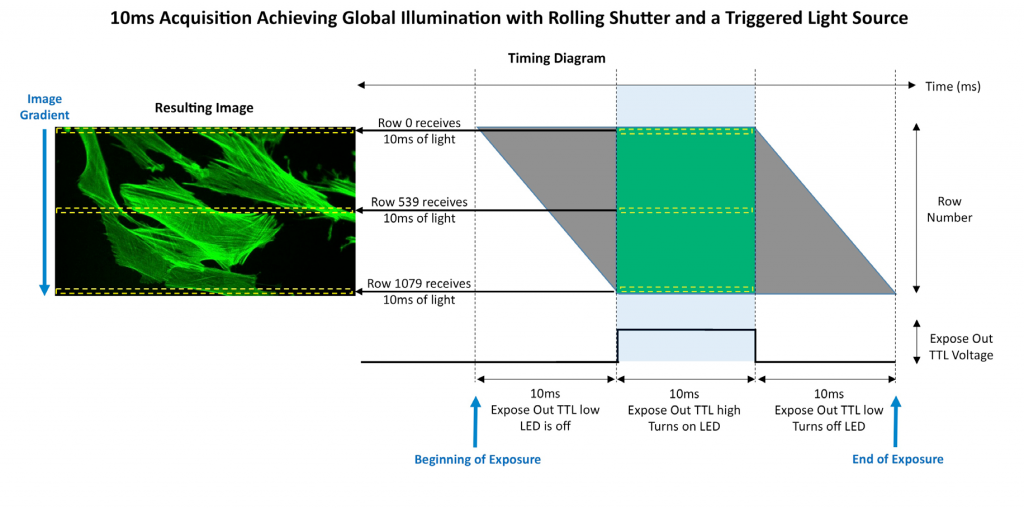Introduction
CCD/EMCCD and CMOS camera sensor technologies both use electronic shutters, but differ in the way each sensor reads the signal at a given pixel.
A typical CCD/EMCCD camera exposes all sensor pixels simultaneously, which is known as a global shutter. This means that images obtained from cameras with these sensors were images of a single point in time.
While some global shutter CMOS technologies exist the majority of CMOS cameras use a rolling shutter, which involves reading out individual rows of pixels, going down the sensor. This means that the time that the image is taken changes by a very small amount as you move down the image. This article will cover the differences between global shutter and rolling shutter cameras, as well as the pros and cons of each technology.
Global Shutter
A camera with a global shutter can take an image of a single point in time across the whole camera sensor, which is useful when imaging fast biological processes.
However, while this shutter mode has no time difference across the image, a CCD/EMCCD is at an inherent disadvantage when it comes to image acquisition speed and frame rate, as the sensor only has a single analog-to-digital converter (ADC), with the ultimate speed of global shutter CCD/EMCCD being limited by the rate that individual pixels can be transferred and digitized. The more pixels on the sensor to transfer, the slower the total frame rate, even if the whole frame can be captured at once.
Rolling Shutter
A CMOS sensor features one ADC for each column of pixels, making conversion time significantly faster and allowing the CMOS cameras to benefit from greater speed.
In order to further maximize speed and framerates, each individual row of pixels on the sensor begins the next frame’s exposure after completing the readout for the previous frame. This is the rolling shutter, which makes CMOS cameras very fast, but with a small time delay between each row of the image and an overlapping exposure between image frames.
The readout process along rows of a CMOS sensor is an extremely fast process, each row of the sensor can be read in approximately 10 µs. However, when there are often 1000s of rows, this results in total readout times of around 10 milliseconds. To put this into context, the average human eye blink lasts 100 milliseconds.

As CMOS sensors are also not bottlenecked by a single ADC, they also feature many more pixels, resulting in CMOS having a large advantage in both speed and field of view (FOV). This makes CMOS cameras suitable for high-speed applications and imaging of fast dynamic biological processes (such as calcium imaging).
Rolling Shutter Effect
Due to this slight delay in reading out each sensor row, the top row of the sensor can be starting to image a new frame while the bottom row is still reading out the previous frame. This staggered readout can lead to image artifacts with high-speed samples, as seen in Fig.2. Because CMOS is the dominant camera sensor technology today, the vast majority of smartphones, digital cameras, and other imaging devices use CMOS for taking pictures, which leads to many examples of the rolling shutter effect. Try taking some videos of fast-moving objects with your phone and see if you can spot it!

What causes this rolling shutter effect? CMOS sensors scan the image from one edge to the other, meaning that when the camera was reading out from one side of the image, the subject was in one position. By the time the camera was reading out the other side of the sensor, the subject had moved to another position. This results in interesting distortion effects.
Considering the rolling shutter effect, why would CMOS not use global shutters? In order to have a global shutter extra electronics are needed on the sensor, which means these sensors are front-illuminated and lose out on quantum efficiency as a result. There is currently no model that has back-illuminated CMOS sensors and a global shutter. In addition, switching to a global shutter would also reduce the speed/framerate of the camera. While the rolling shutter can create distortions and illumination issues, there is a considerable payoff of additional speed and efficiency.
However, most applications will not be affected by the effect of the rolling shutter, with the vast majority of documentation and cell imaging not being at speeds high enough to notice the effects. If the rolling shutter effect does become an issue, there is the ‘best of both worlds option’, the pseudo-global shutter.
Pseudo Global Shutter
The best option would be to keep the benefits of the rolling shutter (greater speed and high sensitivity from back-illuminated sensors) while eliminating the distortion from the rolling shutter effect. There is the option of using custom readout modes with CMOS sensors in order to image with a ‘pseudo global shutter mode’ (also called All Rows Mode). This solution combines the fast frame rates of a rolling shutter with the exposure simplicity of a global shutter, by only turning on the light source when all rows in the frame can be simultaneously exposed.

This mode eliminates distortions from the rolling shutter effects, while still allowing much faster frame rates and lower read noise/dark current when compared to true global shutter sensors. Due to these advantages, most back-illuminated CMOS cameras operate with the pseudo-global shutter setup. More information on global shutter, rolling shutter, and pseudo-global shutter can be seen in Fig.4.

Summary
Due to the slow nature of a mechanical shutter, most scientific cameras feature an electronic shutter, which is typically a global shutter or rolling shutter. While a global shutter can image the entire sensor at the same time point, a rolling shutter allows cameras to image with much greater speed, with the option for a rolling shutter to act as a global shutter with the pseudo global shutter. Check your camera and see which shutter you are using, is it the best for your application?
